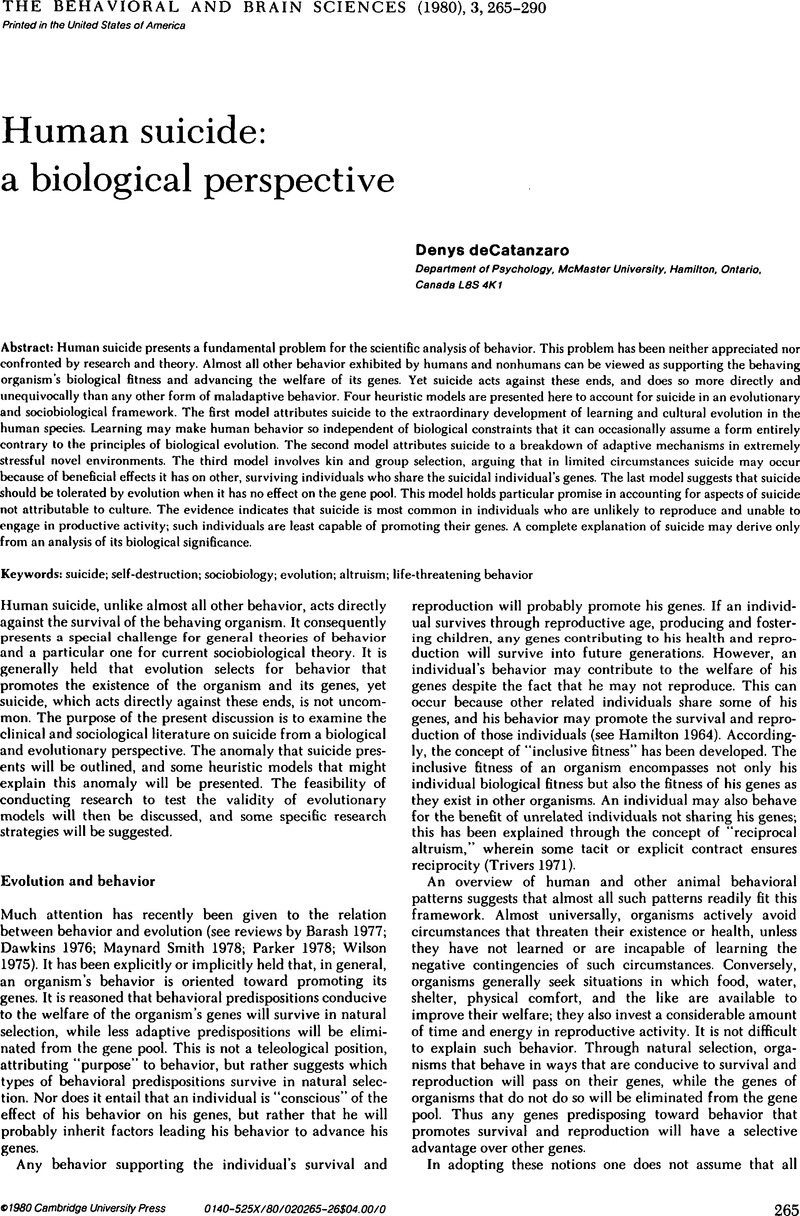Crossref Citations
This article has been cited by the following publications. This list is generated based on data provided by Crossref.
1981.
Suicide and Self-Damaging Behavior.
p.
215.
de Catanzaro, Denys
1986.
A Mathematical Model of Evolutionary Pressures Regulating Self‐Preservation and Self‐Destruction.
Suicide and Life-Threatening Behavior,
Vol. 16,
Issue. 2,
p.
166.
Preti, Antonio
2005.
Suicide among Animals: Clues from Folklore That May Prevent Suicidal Behaviour in Human Beings.
Psychological Reports,
Vol. 97,
Issue. 2,
p.
547.
PRETI, ANTONIO
2005.
SUICIDE AMONG ANIMALS: CLUES FROM FOLKLORE THAT MAY PREVENT SUICIDAL BEHAVIOUR IN HUMAN BEINGS.
Psychological Reports,
Vol. 97,
Issue. 6,
p.
547.
Preti, Antonio
2007.
Suicide among Animals: A Review of Evidence.
Psychological Reports,
Vol. 101,
Issue. 3,
p.
831.
PRETI, ANTONIO
2007.
SUICIDE AMONG ANIMALS: A REVIEW OF EVIDENCE.
Psychological Reports,
Vol. 101,
Issue. 7,
p.
831.
Soper, C. A.
2018.
The Evolution of Suicide.
p.
1.
Soper, C. A.
2019.
Evolutionary Perspectives on Death.
p.
37.
Soper, C. A.
2024.
Ethological Problems with the Interpersonal Theory of Suicide.
OMEGA - Journal of Death and Dying,
Vol. 89,
Issue. 1,
p.
292.



